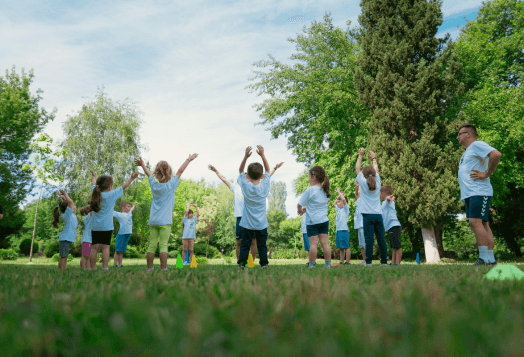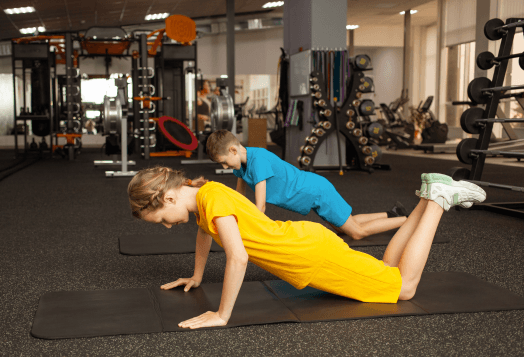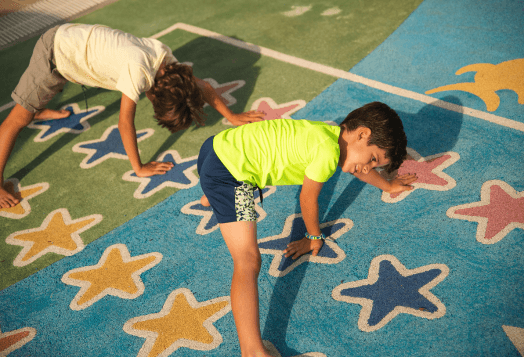
Imagine a world where every child eagerly jumps off the sofa, excited to move, play, and grow stronger every day. When young people discover the joy of movement, they unlock benefits that stretch far beyond the playground or sports field. From stronger bodies to healthier minds and happier social lives, encouraging exercise for kids sets them up for a vibrant, confident future.
Why Physical Activity is Essential for Children and Teens
Physical activity is far more than just a way to burn off energy; it plays a critical role in the growth and development of children and teenagers. Understanding the many benefits helps parents, educators, and caregivers champion exercise for kids and teenagers as a natural part of everyday life.
1. Physical Health Benefits
Regular kids' workout routines offer an impressive array of physical health benefits. Engaging in physical activity strengthens muscles and bones, which are vital during the rapid growth phases of childhood and adolescence, and supports healthy eating habits for kids.
Moreover, staying active enhances the immune system. Children who move regularly are less likely to fall ill, helping them maintain energy and focus for school and play. Activities like running, cycling, or swimming can significantly contribute to a strong cardiovascular system, promoting overall physical resilience.
2. Mental Health Benefits
The benefits of exercise for mental health in teens and children cannot be overstated. For many young people, especially teenagers facing academic and social pressures, exercise offers a healthy outlet to combat anxiety and depression. When children are active, they tend to be happier, more focused, and better equipped to handle challenges.
3. Social Benefits
Physical activity also nurtures important social skills. Participating in group sports or kids' workout classes fosters teamwork, communication, and empathy. These social interactions build confidence and a sense of belonging among children and teens.
Whether it’s a local football team or a school dance class, physical activities provide a structured environment where young people learn to cooperate, resolve conflicts, and celebrate successes together.
Types of Exercises for Kids and Teens
When it comes to exercise for teenagers and children, variety and fun are key. Tailoring activities to age and interests ensures young people stay engaged and reap maximum benefits.
1. Aerobic Exercise
Aerobic activities are fantastic for heart health and stamina. For younger children, simple pleasures like running, cycling, and swimming make exercise enjoyable and engaging. Teens can take on more structured aerobic workouts, such as dance classes or jogging.
Youth aerobic activities encourage sustained movement that elevates the heart rate, improving endurance. Fun options, such as obstacle courses or active games, make aerobic exercise less of a chore and more of an adventure.
2. Strengthening Exercises
As children grow, incorporating muscle-strengthening exercises becomes important. Light resistance training or bodyweight exercises help build muscle tone and joint stability. This is particularly beneficial for teenagers developing their strength and preparing their bodies for adult physical demands.

3. Flexibility and Balance
Flexibility exercises like yoga and stretching are excellent for preventing injuries and improving coordination. These activities teach kids and teens how to listen to their bodies and relax muscles, which supports both athletic performance and mental calmness.
Classes tailored for young people, often led by kids exercise program developers, focus on making flexibility and balance training fun and engaging, incorporating games and imaginative movement.
4. Team Sports
Team sports like football, basketball, and volleyball offer more than physical benefits. They cultivate endurance, strategic thinking, and social bonds. Playing team sports regularly is one of the best ways for children and teens to develop resilience, discipline, and leadership skills.
How Much Exercise Do Kids and Teens Need?
Knowing the right amount of exercise is just as important as choosing the right activities. The NHS recommends that children and teenagers engage in at least 60 minutes of moderate to vigorous physical activity daily to enjoy the full spectrum of health benefits.
1. Age-Appropriate Exercise
Younger children (ages 5-12) thrive on a mix of active play, aerobic activities, and basic strength and flexibility exercises. Teens (13-18 years) can handle more structured workouts, including specific training for strength and endurance, alongside diet tips for teenagers to stay healthy.
It's important to listen to individual fitness levels and preferences to avoid burnout or injury. A child fitness expert might suggest gradually increasing activity duration and intensity as a child grows.
2. Incorporating Play
For younger children, play is a highly effective way to meet exercise requirements. Games like tag, hopscotch, or playground time naturally encourage movement without feeling like a formal workout.
Parents and caregivers should recognise that spontaneous active play often leads to better compliance and greater enjoyment than regimented exercise routines.
Tips to Encourage Kids and Teens to Stay Active
Encouraging young people to stay active is a challenge for many families, but with the right strategies, it becomes a joyful and rewarding process.
1. Lead by Example
Children emulate the adults around them. When parents and guardians prioritise their own physical fitness, children are more likely to see exercise as a normal, enjoyable part of daily life. Simple family activities like evening walks or weekend bike rides foster a culture of health.
2. Make It Fun
Turning fitness into a game or activity that kids look forward to is a game-changer. Whether it’s dancing to favourite tunes, setting up obstacle courses, or organising friendly competitions, fun keeps motivation high.

3. Social Engagement
Teens, in particular, value social connection. Encouraging them to exercise with friends or join community sports teams enhances both fitness and social skills. Group workouts or classes offer accountability and a shared sense of purpose.
4. Limit Screen Time
Reducing sedentary behaviours such as excessive TV or gaming time is essential. Strategies include setting screen-time limits, promoting outdoor play, or creating tech-free zones during family meals or evenings.
Making Exercise Fun for Kids and Teens
Building healthy habits around exercise for kids and teenagers is a gift that lasts a lifetime. The physical, mental, and social benefits of staying active are profound and wide-ranging. By choosing age-appropriate activities, following recommended exercise durations, and fostering a positive attitude towards fitness, parents and caregivers can help children and teens thrive.
Remember, The journey to youth fitness is a shared adventure, full of fun, friendship, and flourishing health, guided by fitness trainers.
Disclaimer: The information provided is intended for general informational purposes only. It is not a substitute for professional advice or guidance. For personalised recommendations or specific concerns, please consult a certified professional.




